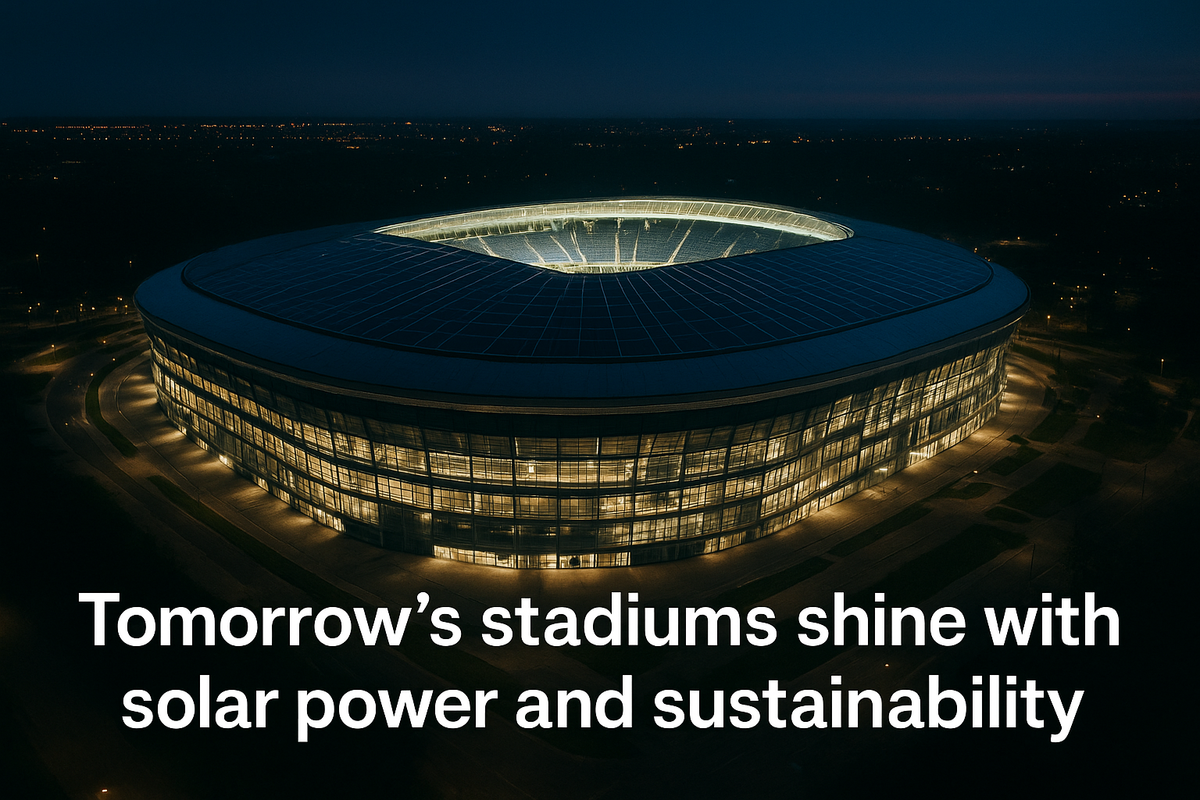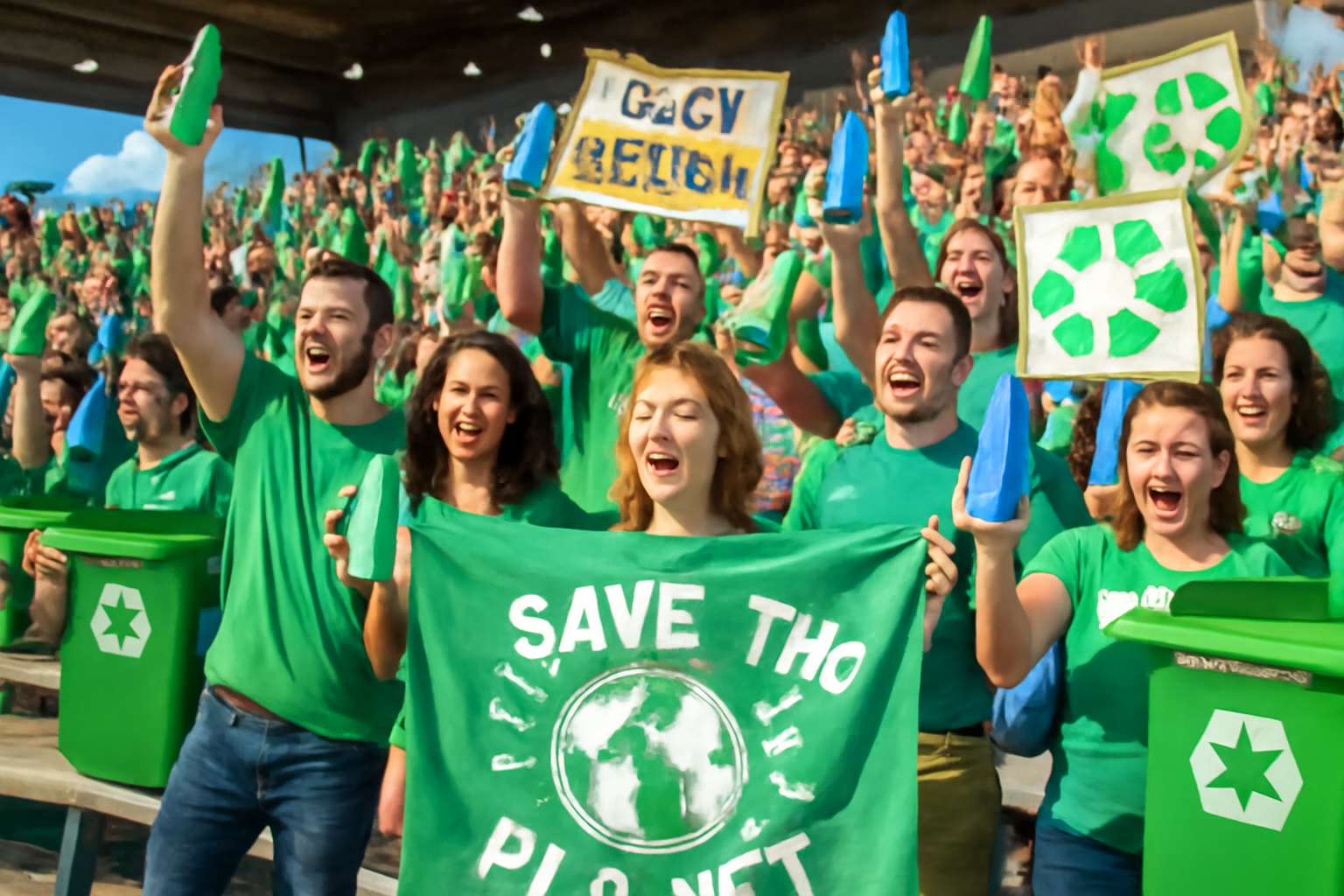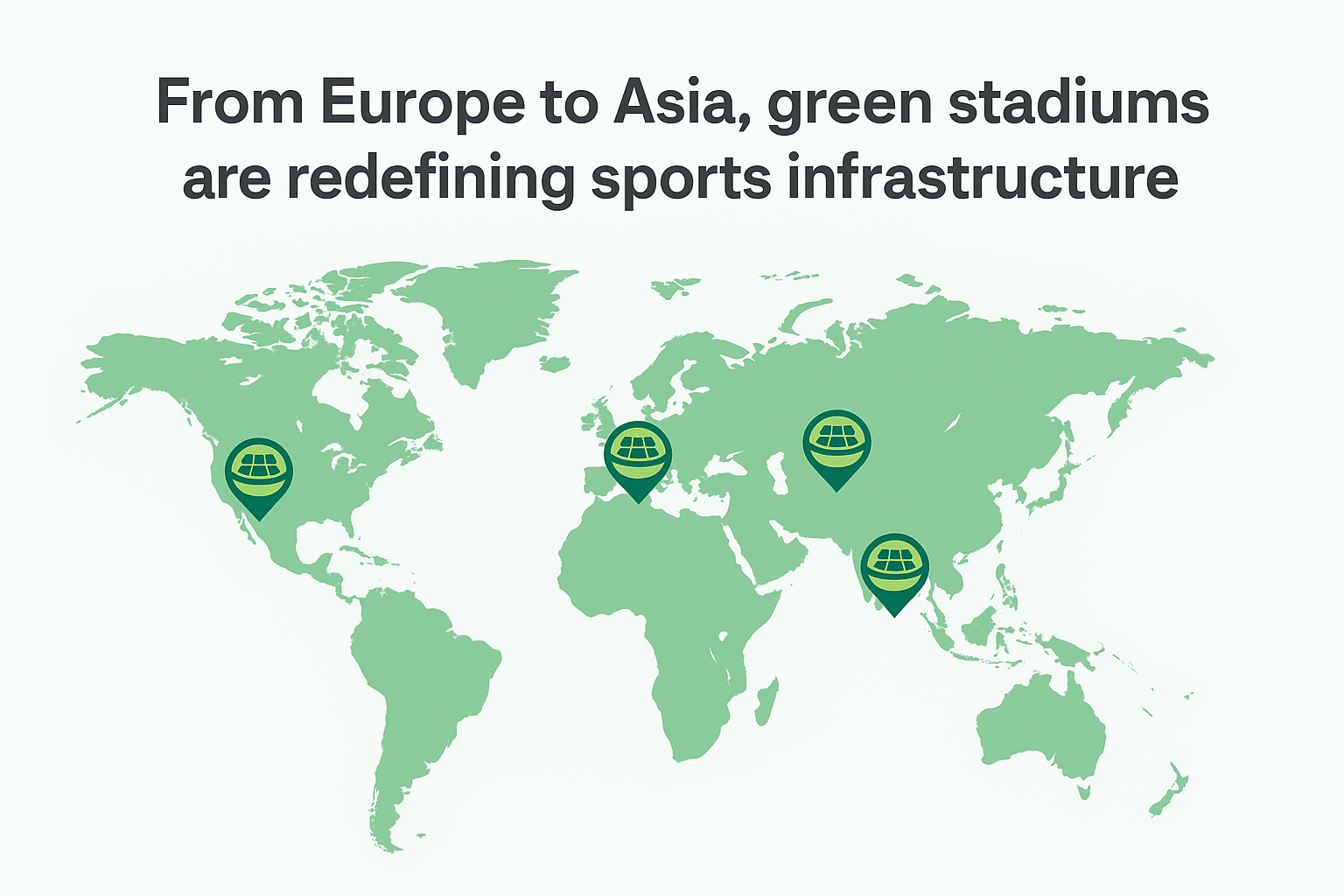Beautiful Game, Greener World: How Sports Are Going Eco-Friendly in 2025
From solar stadiums to biodegradable gear, sports in 2025 are going green. Athletes, fans, and franchises are uniting for sustainability, proving the future of sports is eco-conscious.

The roar of the crowd, the thrill of competition, the shine of a trophy sports have always been about passion, unity, and glory. But in 2025, there’s a new player on the field: sustainability. From solar-powered stadiums to eco-friendly gear, the global sports industry is rewriting its playbook to score big for the planet.
This shift isn’t just about going green for good press it’s about aligning the business of sports with the urgent demands of climate action. As fans, athletes, and governing bodies raise their voices for environmental responsibility, the industry is realizing that eco-conscious practices are no longer optional they’re essential.
In this blog, we’ll dive deep into how sports are embracing sustainability in 2025, exploring green stadiums, eco gear, waste reduction, and the rising role of fans in shaping the future of sustainable athletics.
1. The Stadium Revolution: Building Arenas That Breathe
Sports stadiums are traditionally notorious for their massive carbon footprint from energy-guzzling lights to mountains of post-game waste. But 2025 is witnessing a radical transformation.
- Solar-Powered Arenas: The trend started with pioneers like the Amsterdam Arena (home to Ajax), which has run partly on solar energy for years. Today, stadiums across Europe, the U.S., and Asia are adopting rooftop solar panels and battery storage systems to reduce reliance on fossil fuels.
- Rainwater Harvesting Systems: Cutting-edge designs now allow stadiums to collect, filter, and reuse rainwater for irrigation, cleaning, and even cooling systems.
- Modular, Low-Impact Construction: Builders are switching to recycled steel, bamboo, and sustainable concrete alternatives to lower the environmental cost of construction.
One shining example is Tottenham Hotspur Stadium in London, which already integrates sustainable design elements. In 2025, new venues are going a step further aiming for net-zero certification, where the total energy consumed equals the amount generated through renewables.
2. Eco Gear: Playing Green, Literally
Gone are the days when performance gear meant synthetic, non-biodegradable plastics. Sports brands are now betting big on eco-friendly innovation.
- Recycled Materials in Jerseys: Nike, Adidas, and Puma are leading the charge by making jerseys and training kits from recycled ocean plastic and PET bottles. In 2025, over 40% of major league team uniforms worldwide are produced with sustainable textiles.
- Biodegradable Footwear: Sneaker giants are experimenting with plant-based leather, algae foam, and compostable soles, ensuring that shoes leave no trace once discarded.
Carbon-Neutral Equipment: Tennis rackets, surfboards, and even footballs are being designed with low-carbon manufacturing processes, reducing emissions at every stage.

The eco gear movement has also sparked a new consumer trend: fans are demanding sustainable merchandise, forcing brands to rethink their supply chains.
3. Waste Not, Cheer More: Tackling Event Pollution
A single sporting event can generate tons of waste plastic cups, food wrappers, and abandoned fan merchandise. But the tide is turning:
- Zero-Waste Games: Many events are committing to 100% recycling, composting, or reusing all waste generated. The Paris 2024 Olympics set the stage, and now 2025’s sporting calendar is seeing similar policies across leagues.
- Smart Waste Bins: High-tech bins at stadiums use AI to sort trash automatically, ensuring recycling is maximized.
- Plastic-Free Policies: Single-use plastics are being phased out. Instead, fans get reusable cups and digital tickets, cutting down massively on unnecessary waste.
Even tailgating culture, once infamous for litter, is evolving. Fans are encouraged to bring recyclable packaging, solar grills, and reusable cutlery transforming the parking lot party into a planet-friendly ritual.
SEO Keywords: Zero-waste sports events, sustainable fan experience, plastic-free stadiums, eco-conscious sports fans.
4. The Power of Fans: Driving the Green Wave
Sustainability in sports isn’t just top-down; it’s fueled by fan expectations. Younger generations, particularly Gen Z and Gen Alpha, are demanding that their favorite teams and leagues reflect their environmental values.
- Ticket Sales With a Purpose: Teams now tie a portion of ticket revenue to climate projects, planting trees or funding renewable energy.
- Green Loyalty Programs: Fans earn rewards for eco-actions—like using public transport to the stadium or buying sustainable merchandise.
- Digital Engagement: With online platforms, fans can track the carbon impact of their team and push for greener practices.
This cultural shift is powerful because it makes sustainability not just a corporate PR move but a community expectation.

5. Sports Leagues Take the Lead
It’s not just individual teams or athletes; entire leagues are setting sustainability standards.
- FIFA & UEFA are mandating environmental reporting for clubs participating in international tournaments.
- The NFL has partnered with renewable energy firms to offset carbon emissions across all 2025 games.
- The International Olympic Committee (IOC) is now requiring host cities to commit to long-term environmental regeneration projects, ensuring the Games leave a positive ecological legacy.
These organizations know that their global influence can shape not only fans but also governments and corporations watching closely.
SEO Keywords: sustainable sports leagues, FIFA eco policies, NFL green initiatives, IOC sustainability 2025.
6. Athletes as Eco-Influencers
Athletes are some of the most powerful influencers on the planet, and in 2025, many are using their platforms to champion sustainability.
- Tennis legend Novak Djokovic has invested in eco-conscious sports academies.
- Football star Megan Rapinoe is partnering with brands to push sustainable women’s sportswear.
- Surfing champions are leading campaigns to clean up the oceans they ride on.
By aligning their personal brand with environmentalism, athletes are turning sustainability into a mainstream cultural movement.
7. Challenges: Where the Game Still Struggles
Of course, the road isn’t entirely green. The sports industry still faces hurdles:
- Travel Emissions: International tournaments require teams and fans to fly, leading to huge carbon footprints.
- Greenwashing Concerns: Some organizations make eco-claims without measurable action.
- Cost Barriers: Smaller clubs struggle with the financial burden of sustainable infrastructure.
But with growing public scrutiny and advances in green technology, even these challenges are beginning to be tackled.
8. The Future: What’s Next for Sustainable Sports?
Looking ahead, we’re entering an era where sports might become a global model for sustainability.
- AI-Powered Energy Management: Smarter stadiums that automatically adjust energy use.
- Fully Circular Merchandising: Fan gear designed for reuse, recycling, or resale only.
- Virtual Stadiums: With VR and AR technology, fans may reduce travel by experiencing games at home without losing the thrill.
- Carbon-Positive Pledges: Some teams are already promising not just to offset emissions, but to actively remove carbon from the atmosphere.
The message is clear: the future of sports will be as much about environmental performance as athletic excellence.

Conclusion: The Beautiful Game Meets a Greener World
Sports have always had the power to inspire change—uniting nations, breaking barriers, and igniting passions. In 2025, that same influence is being harnessed for a different kind of victory: a sustainable planet.
From eco stadiums to biodegradable gear, zero-waste events to climate-conscious fans, the transformation of sports is proof that the industry can be both profitable and planet-friendly.
As fans, the ball is also in our court. Every ticket we buy, every jersey we wear, and every choice we make helps shape a greener legacy for the beautiful game—and the world beyond it.




